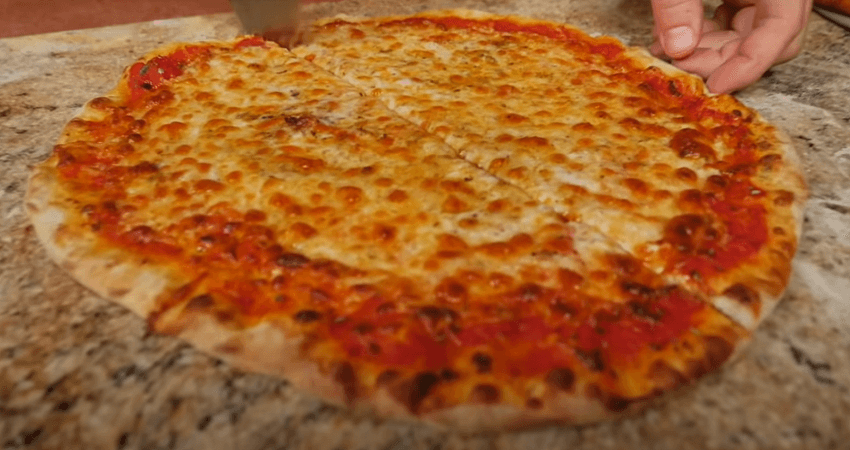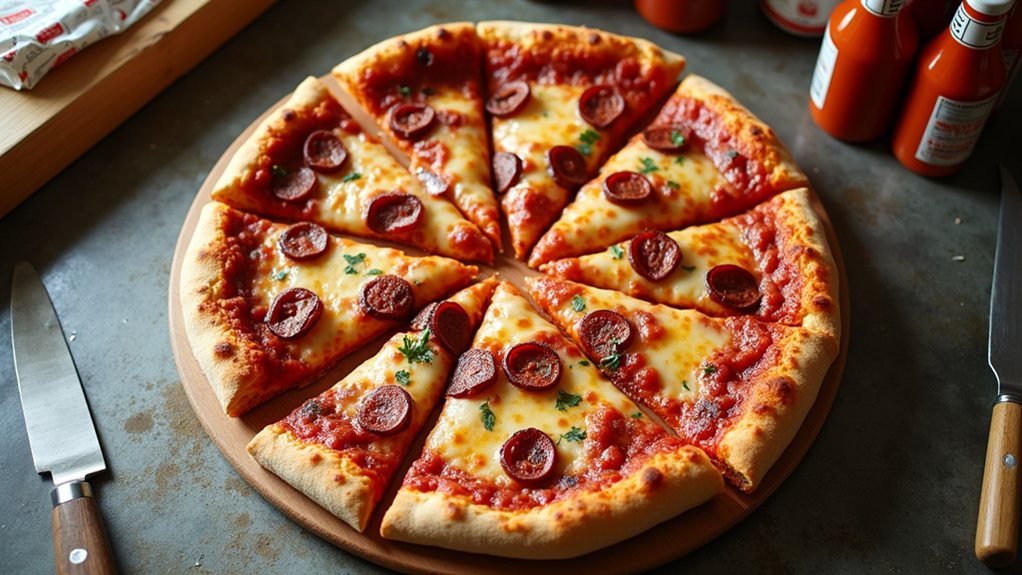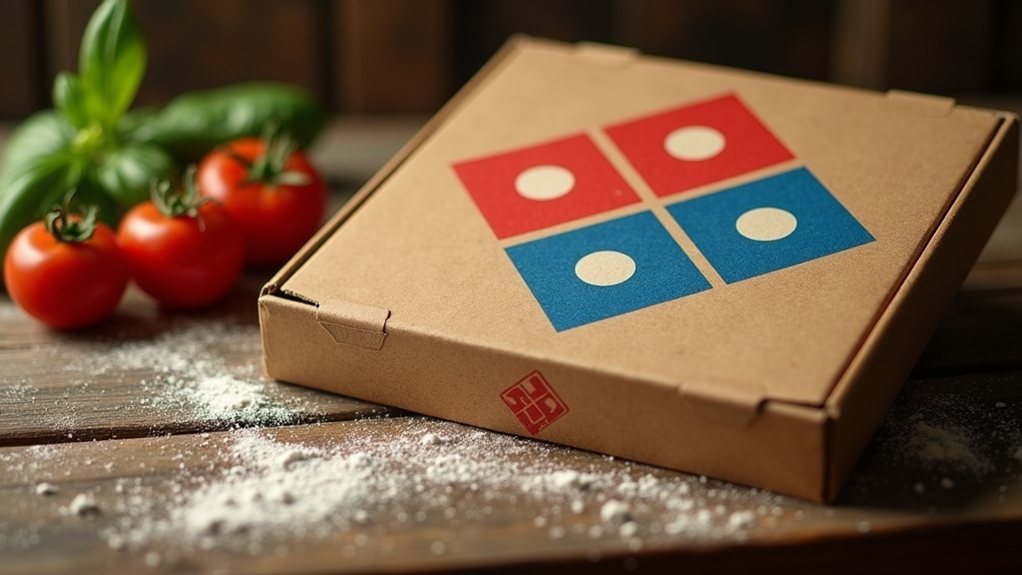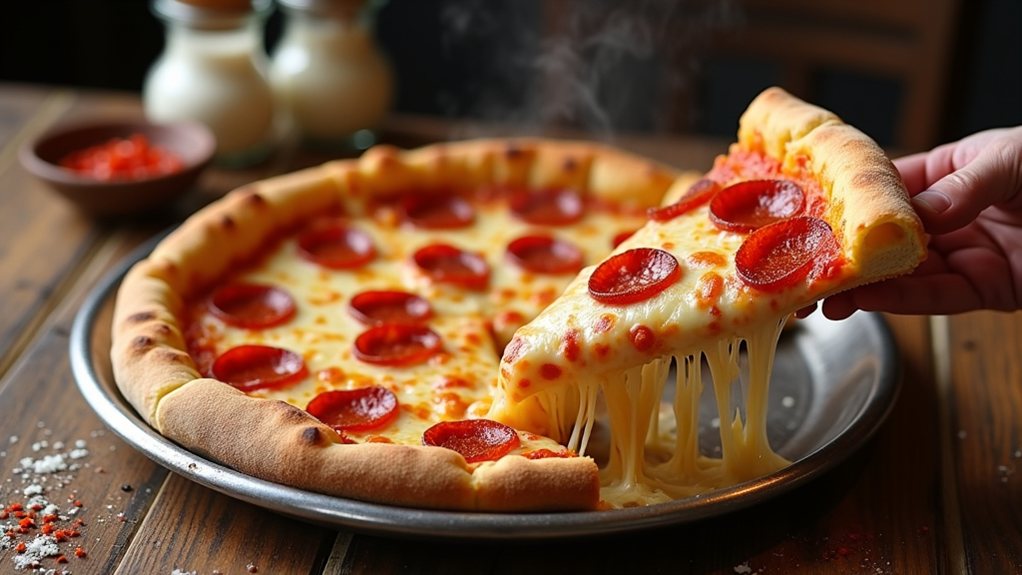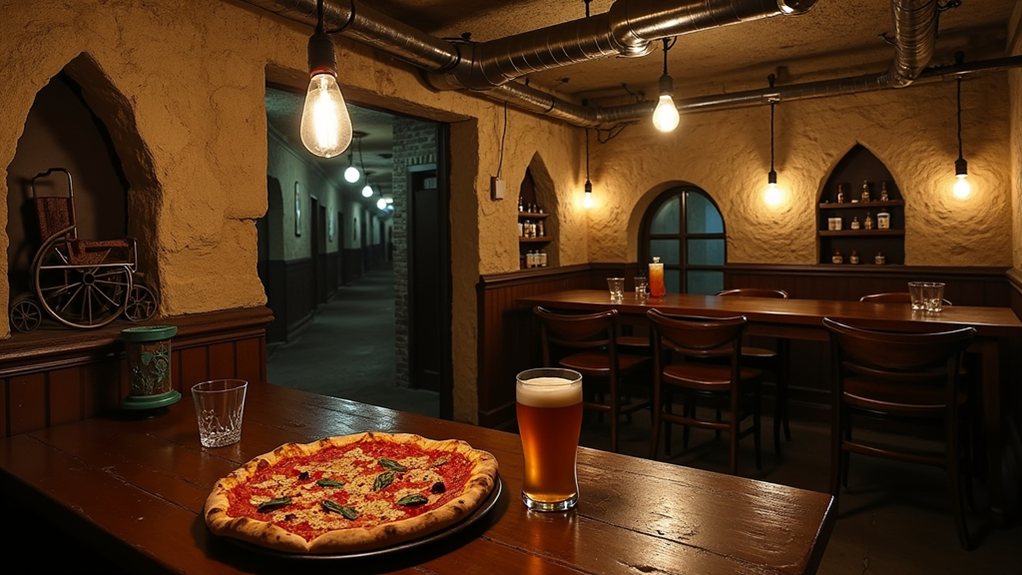Perfecting a New York-style pizza at home challenges many home cooks, yet understanding a few key principles makes this culinary feat achievable. The foundation begins with a properly fermented dough, preferably using a poolish pre-ferment that develops complex flavors over time. Most enthusiasts debate sauce preparation methods, while the right cheese blend contributes greatly to authenticity. With proper techniques and equipment, anyone can recreate that distinctive fold-worthy slice that defines the iconic pizza style.
The Science Behind the Perfect New York-Style Dough
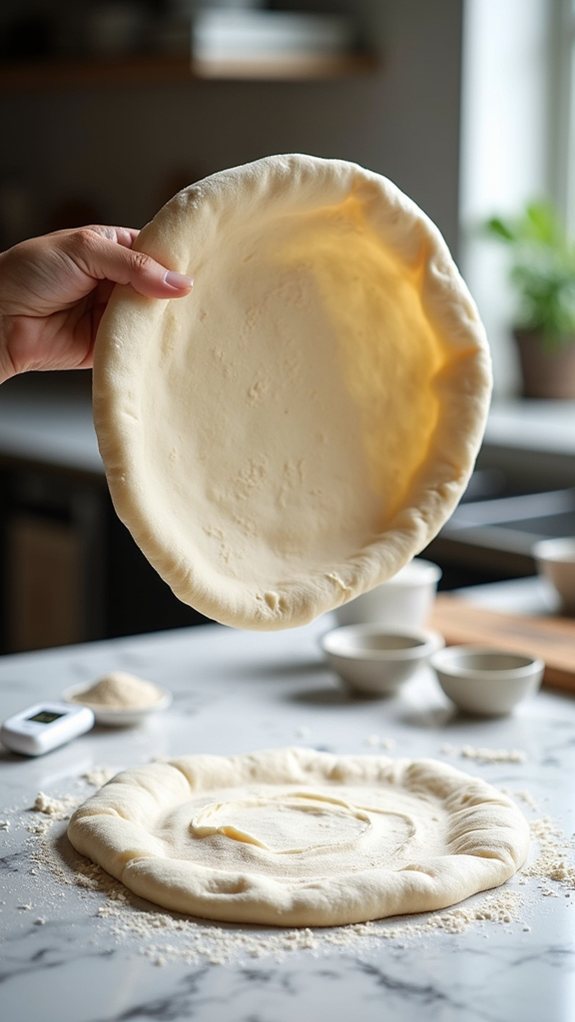
While many home pizza makers focus primarily on toppings and sauces, understanding the chemistry behind New York-style pizza dough is what truly separates an average pizza from an exceptional one.
The magic begins with a poolish pre-ferment, which develops complex flavors through an 18-24 hour fermentation process. This step creates the acids and compounds responsible for the dough’s signature taste.
The protein content in all-purpose flour, combined with the oper kneading technique, develops gluten structures that give the crust its characteristic chew and flexibility.
A slower, cold fermentation period of 24 hours allows enzymes to break down starches into sugars, creating both flavor depth and the perfect browning during baking.
Unlike Neapolitan-style pizzas, which require 00 pizza flour for authentic texture and chew, New York-style dough can be made successfully with standard bread flour.
Crafting a Flavor-Packed Poolish Pre-Ferment
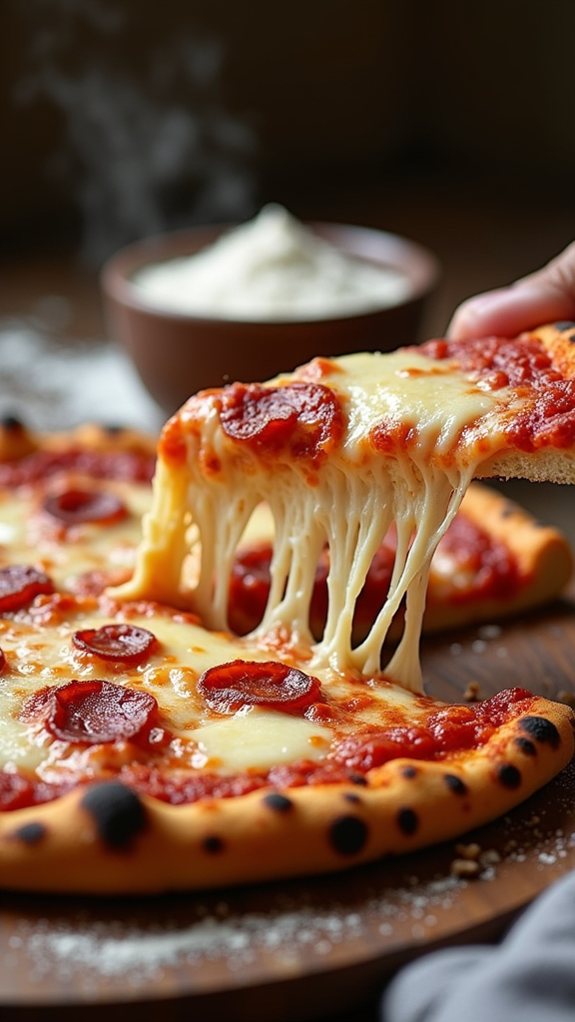
A key secret to achieving authentic New York-style pizza at home lies in creating a flavor-packed poolish pre-ferment, which serves as the foundation for exceptional dough development.
This mixture of water, yeast, and all-purpose flour ferments at room temperature for 18-24 hours, developing complex flavors that store-bought dough simply match.
The poolish’s slow fermentation process breaks down starches into simpler sugars, creating depth while encouraging gluten formation.
When incorporated into the final dough, these compounds contribute to both texture and taste, yielding that characteristic chew and subtle tang that pizza enthusiasts crave without requiring specialized equipment or ingredients.
Similar to traditional pizza dough recipes, patience during the rising process is essential for achieving the light, airy texture that characterizes authentic New York-style pizza.
Sauce Secrets: Cooked vs. Raw Debate Settled
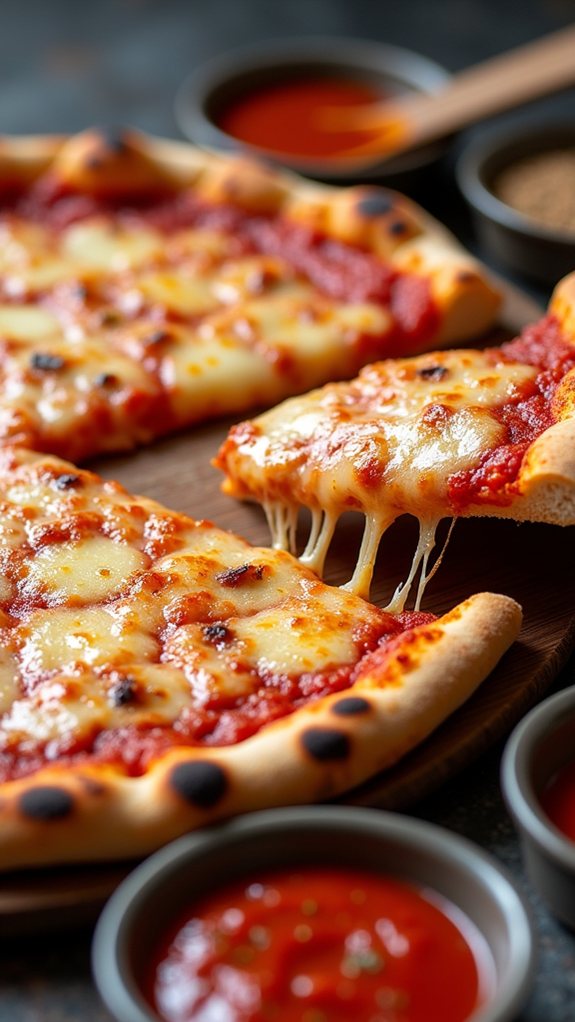
The great sauce debate among New York pizza aficionados centers on whether the classic tomato topping should be cooked or left raw, a controversy that Brian definitively settles in favor of the simmered approach.
His technique blends whole San Marzano tomatoes for texture before sautéing garlic in olive oil and butter, creating a flavor foundation that develops during a 25-minute simmer with oregano and chili flakes.
The sauce reduces by half over 30 minutes, with 3 grams of salt and 5 grams of sugar balancing the acidity.
This cooked sauce delivers superior thickness and depth, harmonizing perfectly with the cheese blend.
The extended cooking time not only achieves the ideal consistency but also allows for proper flavor development as the ingredients meld together into a harmonious blend.
The Ultimate Cheese Blend for Authentic Results
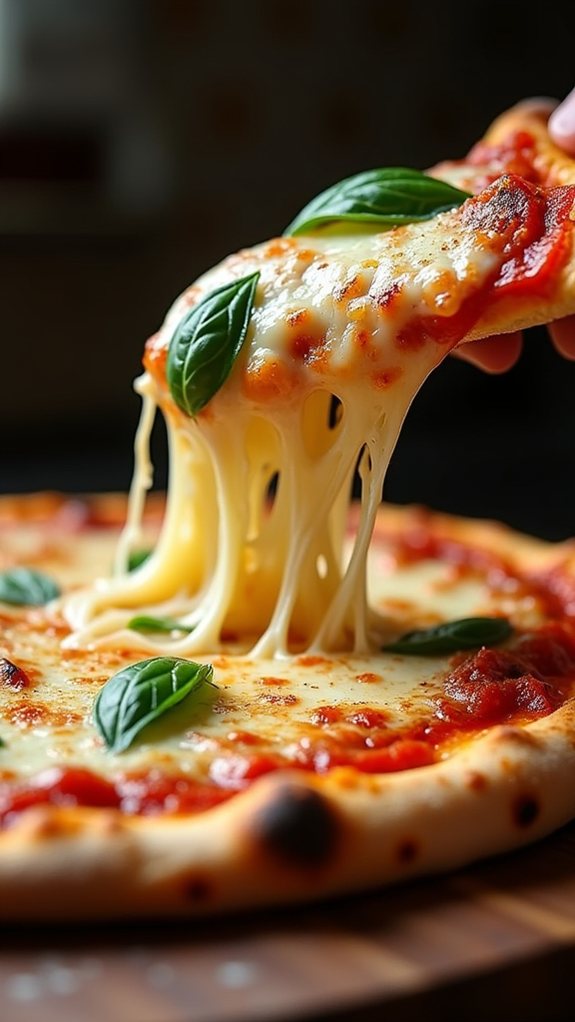
Creating authenticity in New York-style pizza requires meticulous attention to cheese selection, which Brian addresses through his carefully calibrated blend of full-fat and part-skim mozzarella.
The ideal ratio balances richness with proper melt characteristics. Approximately 200 grams of each type are grated on the largest holes of a box grater.
| Cheese Component | Amount | Purpose | Technique | Result |
|---|---|---|---|---|
| Full-fat mozzarella | 200g | Richness | Coarse grate | Creamy texture |
| Part-skim mozzarella | 200g | Meltability | Coarse grate | Proper stretch |
| Fresh mozzarella | Small amount | Flavor accent | Crumbled | Texture contrast |
| Total cheese | 175-200g | Coverage | Even distribution | Classic NY finish |
| Kosher salt | Pinch | Flavor booster | Final sprinkle | Balanced taste |
Dough Handling Techniques for the Perfect Crust

Mastering dough handling begins with proper fermentation, a 48-hour process that develops flavor and structure essential for authentic New York-style pizza.
The expedition starts by creating a poolish pre-ferment using water, yeast and flour. This ferments for nearly 24 hours before being incorporated into the main dough.
After mixing the ingredients, kneading for 30-40 rolls builds strength in the gluten network.
The dough should rise for 45 minutes, then be divided into 300-gram balls with closed seams to prevent tears.
Overnight refrigeration improves flavor development, while proper shaping requires patient fingertip pressure to create an 8-inch round crust.
Baking Methods to Recreate Pizzeria-Quality Results
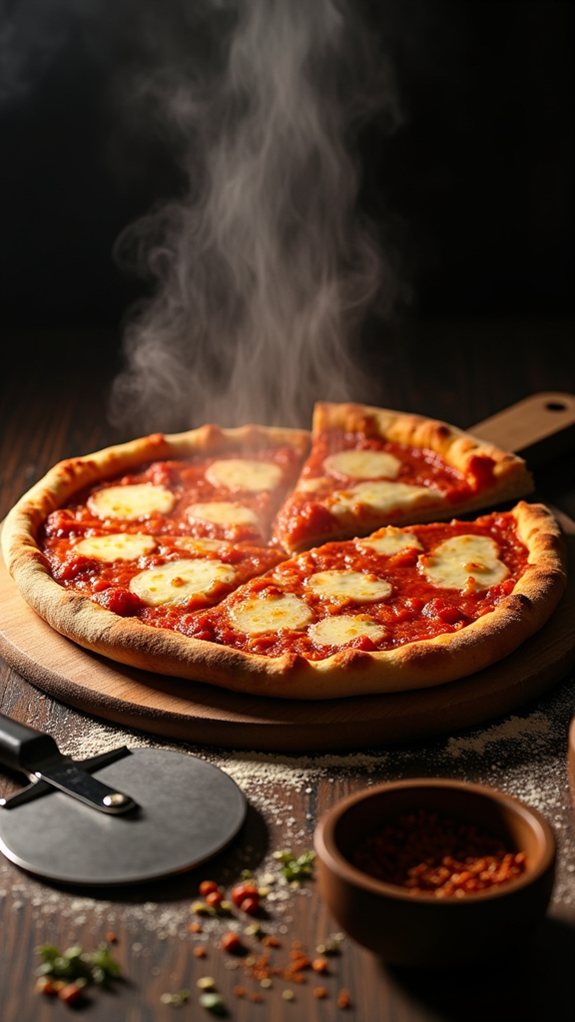
Proper baking techniques prove as crucial as dough preparation to achieve pizzeria-worthy results at home. The transformation from raw dough to perfect pizza relies heavily on heat intensity and cooking surface selection, which home chefs can master with the right approach.
| Baking Method | Temperature | Cook Time | Equipment Needed | Results |
|---|---|---|---|---|
| Pizza Stone | 550°F | 6 minutes | Preheated stone | Crispy, even bottom |
| Steel Plate | 525-550°F | 4-5 minutes | 1/4″ steel | Extra crispy crust |
| Home Oven (max) | 500-550°F | 6-8 minutes | Heavy baking sheet | Good browning |
| Grill Method | 500-600°F | 3-5 minutes | A pizza stone on the grill | Smoky flavor |
| Broiler Finish | High | 1-2 minutes | None (after baking) | Bubbly, charred spots |
Timing and Temperature: Critical Elements for Success
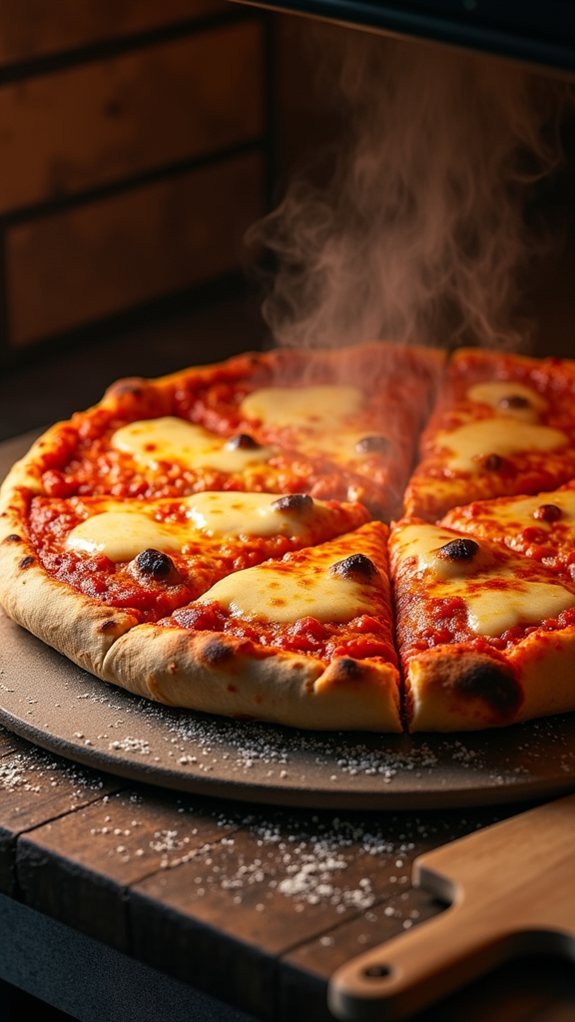
While achieving the perfect New York-style pizza requires quality ingredients and proper technique, precise timing and temperature management often separate disappointing attempts from triumphant results.
The 48-hour preparation window isn’t merely a suggestion—it’s crucial for developing complex flavors in both dough and sauce.
Baking at 550°F mimics professional deck ovens, creating that signature crisp-yet-chewy crust in about six minutes.
Room temperature should be kept properly while cold cheese melts at the ideal rate, preventing oily pooling.
This delicate balance of timing and heat creates the textural contrast that defines authentic New York pizza: brittle exterior with tender chew inside.
FAQs
Can New York-Style Pizza Be Made Without a Pizza Stone?
New York-style pizza can be made without a pizza stone. A preheated cast iron skillet, baking steel, or even an inverted baking sheet can serve as effective alternative cooking surfaces.
How Do You Store Leftover Pizza Dough for Future Use?
Leftover pizza dough can be stored in airtight containers in the refrigerator for 2-3 days or frozen for up to 3 months. Freezing requires oil-coated dough wrapped tightly in plastic.
Is It Possible to Freeze the Completed Pizza Sauce?
Pizza sauce can be frozen in airtight containers for up to 3 months. For best results, cool completely before freezing and thaw overnight in the refrigerator before use.
What’s the Best Substitute for San Marzano Tomatoes?
For San Marzano tomatoes, high-quality Roma or plum tomatoes can be substituted. The key is to find tomatoes with balanced sweetness and acidity, minimal seeds, and a meaty texture for proper sauce consistency.
How Do You Prevent Soggy Pizza When Adding Fresh Vegetables?
To prevent soggy pizza with fresh vegetables, they should be pre-roasted, salted to draw out moisture, thinly sliced, placed on top of cheese, or added halfway through baking for ideal moisture control.
